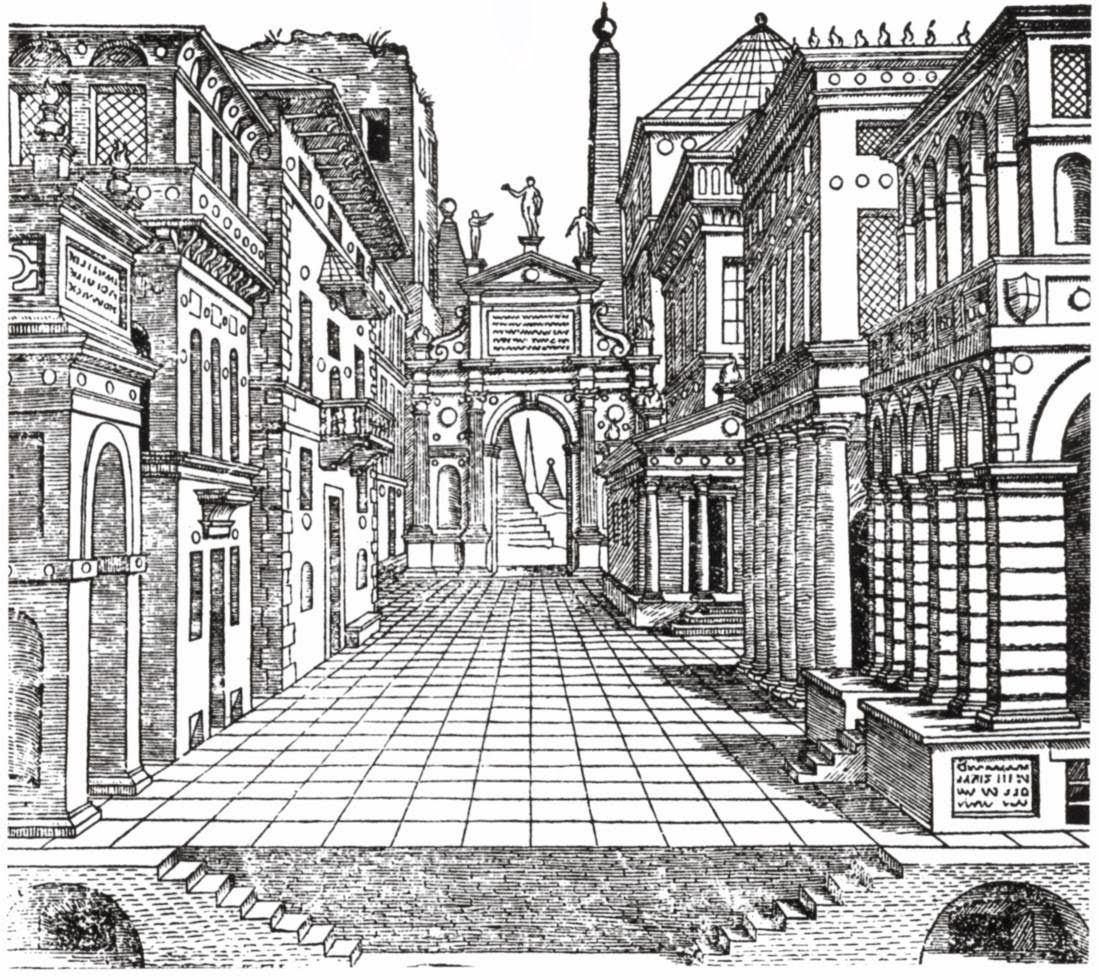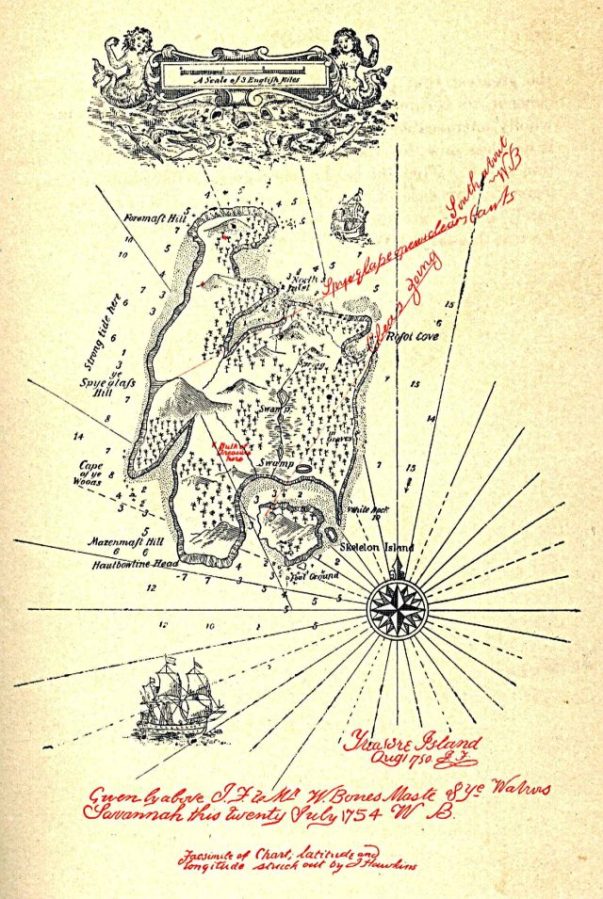
The Dictionary of Imaginary Places
by Alberto Manguel and Gianni Guadalupi.
Illustrations by Graham Greenfield;
maps and charts by James Cook.
Macmillan, 1980 (1987, 1999).
Note: all links are to my reviews or general discussions.
I fell upon this book when it was first published like a punter attacking an ice-cream during the interval in an over-heated theatre. Just the title had me drooling, and once inside the book I was in seventh heaven.
First of all it took places described in a range of literary works as literally true by giving each a Baedeker-style travel guide entry. Then, like any good Baedeker it provided maps and charts giving visual aids to familiar and unfamiliar locations. There have been at least two revised editions since 1980 but this was the first attempt to give an overview of dystopias, utopias, fantasy worlds and comic geographies from different cultures, languages and centuries.
The mock-seriousness is sometimes leavened with equally tongue-in-cheek humour though I found that at times the terseness of some entries could be wearing. Just a few examples of entries, almost at random, may give you a flavour.

Bluebeard’s Castle, for example is described as “somewhere in France; the exact location remains unknown. The castle is famed for its many riches and fine furniture, tapestries and full-length mirrors with frames of gold. Travellers – in particular female ones – should proceed with caution…”
Some places are in distant lands, such as King Solomon’s Mines, “discovered by Allan Quatermain’s expedition to Kukuanaland, Africa, in 1884”, or Shangri-La, which can “only be reached on foot and visitors are infrequent.”
In contrast Ruritania is “a European kingdom reached by train from Dresden” while Wonderland is “a kingdom under England, inhabited by a pack of cards and a few other creatures.”

Here you can find entries not just for Utopia but also for Atlantis and Oz, Camelot and Treasure Island, Middle-earth and Erewhon, Arkham and Hyperborea, Gormenghast and Lilliput, plus a plethora of more obscure places culled from even more obscure titles. Graham Greenfield’s wonderful line drawings have an antique quality about them which only adds to the sense of strangeness and wonder, while the maps and charts by James Cook are a joy to peruse and explore.
Some maps from 1980 needed revision (Narnia, for example, had some crucial omissions and misplacements), but their consistent olde-worlde look – with hachures rather than contour lines, for instance, and Renaissance-style typefaces – is charming and lends character to the whole presentation.

In addition to the alphabetical listing of places, the authors include an index of authors and titles to help you cross-reference. For example, if you can’t remember some of the cities visited by Marco Polo in Italo Calvino’s Invisible Cities they are handily included here. Which only helps to underscore that The Dictionary of Imaginary Places is a treasure chest to dip into again and again.
Like a Baedeker it’s also useful for pointing the curious traveller to sites and regions that are further off the beaten track, and the literary pioneers that first notified their existence. Opening further pages at random I spot the Ear Islands off the German coast noted by Pliny the Elder, Nutopia first described by John Lennon in 1973, Runenberg discovered by Ludwig Tieck before 1804, and Tsalal Island detailed in Edgar Allan Poe’s 1838 report on Arthur Gordon Pym’s narrative.
If imitation is the sincerest form of flattery then Brian Stableford’s Dictionary of Science Fiction Places in 1999 attempted to do the same for SF worlds, with the same format for entries; unfortunately the quality of the illustrations let this homage down, meaning the sheer magic of the original is missing. Best stick with Manguel and Guadalupi’s magnum opus.

This review, first published 11th May 2013 and now with a few additions, is of the first edition of the Dictionary, though subsequently there have of course been at least two expanded and updated editions.
Aficionados of fictional travel guides might, like me, yearn to ogle the Atlas of Imagined Places: from Lilliput to Gotham City by Matt Brown and Rhys B Davies, published by Rizzoli (2021): as Illustrated Travel Book of the Year it was a winner at the 2022 Edward Stanford Travel Writing Awards, and was highly commended in the British Cartographic Society Awards for 2022.
Meanwhile, many fictional locations in Great Britain (and not just focusing on England) are in this detailed map of Fake Britain where the mind traveller can zoom in and explore sites to their heart’s content: https://assets.londonist.com/uploads/2022/06/fictionallocationsengland.jpg

If I didn’t have it on my shelf, your description would’ve made me go out and find it. Delightful, indeed!
LikeLike
Yes, it’s a brilliant book, isn’t it? Delightfully conceived, lovingly researched and beautifully presented. I often wonder what the revised and expanded editions included; I’m sure some of my favourites of the intervening years made an appearance! Do you have the original or one of the later ones?
LikeLike
Pingback: The Best Of 2020 – Re-enchantment Of The World
Sounds like the perfect accompaniment to The Atlas of Fantasy! 😀
LikeLiked by 1 person
As far as I can see from a listing of places in the Atlas a large number also appear in the Dictionary — it’d be interesting to compare the two in detail.
LikeLiked by 1 person
Oh this sounds fascinating! I love thinking about the geography of imaginary places (how do the lands at the top of the Faraway Tree actually connect up??). I enjoyed Manguel’s The Library at Night, as well.
LikeLiked by 1 person
Yes, I saw lots – well, perhaps a couple – of positive reviews of the Manguel, so it’s another title on my ideal wishlist to read before I pop my clogs . . . Anyway, this title from the last century is well worth investigating, Laura, and there are loads of pre-read copies available online. 😁
LikeLiked by 1 person
I’m glad you republished this review, Chris. It sounds such an interesting book.
LikeLiked by 1 person
Thanks, Anne! I now need to finish reading the Huw Lewis-Jones edited The Writer’s Map: An Atlas of Imaginary Lands, full of contributions from authors enthusiastic about maps and generously illustrated too! In fact I think you may have introduced it to me…
LikeLiked by 1 person
Oh that’s a beautiful book, I have a copy and you’re right about the illustrations. I shall look out for your review as I’d love to know what you make of it.
LikeLiked by 1 person
I’ve read about a third of the contributions but forgot to take notes for a review, so may have to start again!
LikeLiked by 1 person
You’ve made me feel a whole lot better, Chris, I do that quite often!
LikeLiked by 1 person
😁
LikeLike
Oooooooo! *rubs hands with glee* I hadn’t heard of this book before now, but it sounds delicious! 😀
LikeLiked by 1 person
Yes it is, replete with places you know well as well as those you never knew existed!
LikeLiked by 1 person
Fancy that ‘visitors to King Solomon’s Mines are infrequent.’ I’m not surprised.
LikeLiked by 1 person
Yes, I never see them advertised in the windows of travel agents, curious that. At least we now know there’s no aged crone waiting to put the willies up you…
LikeLiked by 1 person
So they say….
LikeLiked by 1 person
I can’t confirm since I visit them so infrequently . . . 😁
LikeLiked by 1 person
All of the mentioned books look wonderful, what a treat of a read!
LikeLiked by 1 person
It’s a reference I return to frequently, though I often wish there were even more maps!
LikeLiked by 1 person